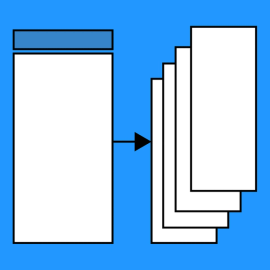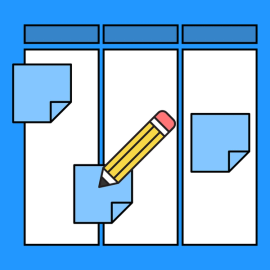
Whether you’re designing a course for the classroom or conference room, FigJam templates help you nail down measures of success and connect your curriculum to the bigger picture.

Design a collaborative curriculum for a learning experience that works for everyone.
Set a new standard of excellence when you seamlessly share information with fellow teachers and educational admin, while always catering to student needs.
Give a warm welcome: Bring new instructors up to speed with a clear curriculum, simultaneously addressing overall goals and minute details.
Share the wealth (of knowledge): Create a communal pool of information so the whole team can incorporate past experiences into future projects.
Customize your teaching: Easily adapt your basic lesson plan to suit specific needs in relation to students, course syllabus, or professional development as they arise.


Planning an engaging, interactive curriculum is a group effort. Gather your team around a shared whiteboard with open canvases and community-built widgets. Our editable curriculum development template brings your team’s best ideas to the desk.
Teach an essential concept or skill in an easy-to-digest way. Keep the brilliance going with more templates designed to unlock new insights and combine diverse perspectives.

Turn learning into an interactive game.

Reveal important connections between separate learning modules.

Enlighten the entire group with our collaborative planning templates.
Standard 7-step curriculum development starts with a question: what is course curriculum used for, and how can we ensure it fulfills its purpose?
1. Determine the need at hand. Does your team require new skills to complete projects? Are students missing important foundational knowledge?
2. Gather a team to help gauge the content and rigor of your course.
3. Collectively define learning outcomes so you don’t lose sight of the big picture. Conduct student assessments or analyses to pinpoint areas of growth, if necessary.
4. Decide on the course content that best connects to your overall purpose—this could include topics or materials like novels, textbooks, and films.
5. Create a rough draft of your curriculum, including the methods you’ll use to teach the selected content. Put it to the test in a mock classroom setting.
6. Incorporate feedback to finalize your course design.
7. Once your curriculum has been put into practice, reflect on the results, takeaways, and opportunities for improvement.
In determining how to create a curriculum for a course, consider each of the three major curriculum types and their purposes:
Refine, refine, and keep refining. Creating a course curriculum is an interactive process, easily facilitated on FigJam’s interactive course curriculum template. Follow the seven steps outlined above, and keep testing and incorporating feedback over time to perfect your course.